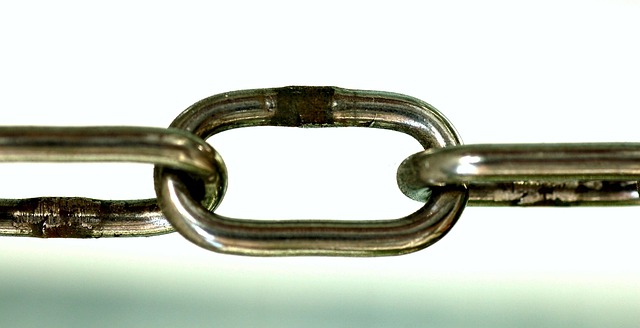Internal link suggestions are a powerful SEO tool that reveals user behavior and site architecture insights, helping content creators identify popular pages and content gaps. To effectively use these suggestions, follow strategic steps like analyzing high-performing pages, utilizing SEO tools for data analysis, structuring links with accurate anchor text, and incorporating contextual links within articles. Regularly review and update internal links to boost page authority, enhance user experience, and improve overall website performance, leveraging thematic connections between pages. Measure success through CTRs to gauge the impact of your internal linking strategy.
Internal linking is a powerful SEO strategy, but understanding its nuances can be challenging. This article guides you through the process of leveraging internal link suggestions for improved search engine optimization. We’ll explore key pages for linking, crafting relevant content connections, and optimizing anchor text. Learn best practices for implementation and discover how to measure success by tracking click-through rates and user behavior. By mastering these techniques, you can enhance your website’s performance using effective internal link suggestions.
- Understanding Internal Link Suggestions: Their Role in SEO
- Identifying Key Pages for Internal Linking
- Crafting Relevant and Contextual Links
- Optimizing Anchor Text for Effective Linking
- Implementing Internal Links: Best Practices
- Measuring Success: Tracking Click-Through Rates and User Behavior
Understanding Internal Link Suggestions: Their Role in SEO

Internal link suggestions play a pivotal role in SEO strategies. These insights help content creators and marketers understand how users navigate their website, identifying popular pages, content gaps, and potential areas for improvement. By analyzing internal links, you can uncover valuable information about user behavior, such as which pages act as entry points or exit points, enabling you to optimize your site’s architecture.
Learning how to use these suggestions effectively involves a combination of strategic thinking and data-driven decisions. A simple internal link suggestions tutorial can guide users through optimizing their site map, ensuring relevant and contextual links enhance user experience and page authority. Tips for implementation include linking to related content within articles, improving crawl efficiency, and fostering better website navigation—all contributing to better SEO performance over time.
Identifying Key Pages for Internal Linking

Identifying key pages for effective internal linking is a strategic step that involves understanding your site’s architecture and user behavior. Start by analyzing page performance data, such as high-ranking pages with high traffic, to pinpoint valuable content hubs. These pages serve as ideal candidates for internal links since they already attract an audience interested in related topics. For instance, if you have a blog post ranking highly for a specific keyword, link to other relevant articles or product pages within your site to provide additional context and improve user experience.
Utilize SEO tools like Google Search Console and analytics platforms to uncover page importance and user engagement patterns. These insights help in making data-driven decisions when structuring internal links. By implementing tips for optimizing internal link suggestions, such as using anchor text that accurately reflects the linked content and ensuring a natural flow of links within your site’s hierarchy, you can enhance SEO efforts and improve overall website performance.
Crafting Relevant and Contextual Links

Creating effective internal links involves an artful balance of relevance and context. When crafting these links, it’s crucial to consider both the user experience and search engine optimization (SEO). Start by identifying keywords and topics within your content that naturally point to related articles or resources on your site. For instance, if you’re writing a blog post about “enhancing website SEO,” include contextual links to other articles like “a comprehensive guide to keyword research” or “optimizing meta titles for better rankings.” This strategy not only guides readers through relevant information but also signals to search engines the thematic connections between pages.
Leveraging internal link suggestions can significantly enhance your efforts. Many content management systems and SEO tools offer features that automatically suggest links based on your content’s keywords and structure. These suggestions can be invaluable tips, providing insights into which pages within your site are most relevant for specific topics. Following internal link suggestions tips consistently will not only improve user navigation but also boost the overall authority of linked pages, thereby enhancing your website’s SEO performance.
Optimizing Anchor Text for Effective Linking

To optimize anchor text for effective internal linking, it’s essential to balance keyword relevance and user experience. Use descriptive language that accurately reflects the target page’s content, rather than generic terms like “click here” or “more info.” Incorporating relevant keywords naturally within anchor text can help search engines understand the context of the link, enhancing both the internal link suggestions SEO and overall site navigation. For instance, if linking to a page about “SEO best practices,” use anchor text such as “learn more about SEO best practices” instead of just “click here.”
Following an internal link suggestions tutorial can guide you in creating strategic links that drive traffic and improve user engagement. Tools offered by many content management systems (CMS) provide valuable internal link suggestions, highlighting existing relevant links within your site’s content. By analyzing these suggestions, you can ensure that your internal linking structure is not only optimized for SEO but also intuitive for visitors. Regularly reviewing and updating these links keeps your site’s architecture efficient and up-to-date, facilitating seamless navigation and boosting overall website performance.
Implementing Internal Links: Best Practices

Implementing effective internal linking strategies is an art that can significantly enhance your website’s user experience and search engine optimization (SEO). To leverage internal links optimally, start by understanding your audience and their information needs. Use tools like Google Analytics to identify popular content and frequently asked questions—these are prime locations for strategic internal links.
When integrating internal link suggestions, prioritize relevance and context. Ensure that each link directs users to content closely related to the topic at hand. This not only improves user engagement but also signals search engines about your site’s structure and hierarchy. Optimize your internal linking strategy by considering anchor text diversity—use descriptive and keyword-rich anchors for better SEO results. Regularly review and update these links, removing or modifying outdated references to maintain a fresh and accurate representation of your site’s content.
Measuring Success: Tracking Click-Through Rates and User Behavior

Measuring success is a crucial step in understanding the impact and effectiveness of your internal linking strategy. By tracking click-through rates (CTRs), you can gain valuable insights into user behavior and engagement. High CTRs on specific internal links indicate popular content that users find relevant and useful, guiding them to explore more of your site.
Utilize analytics tools to monitor user journeys within your website. Analyze which pages are driving the most traffic to others, identifying key content pieces that act as hubs. An internal link suggestions tutorial or strategy can help you identify these valuable assets and optimize their connections, enhancing the overall SEO of your site by improving both user experience and search engine visibility.
